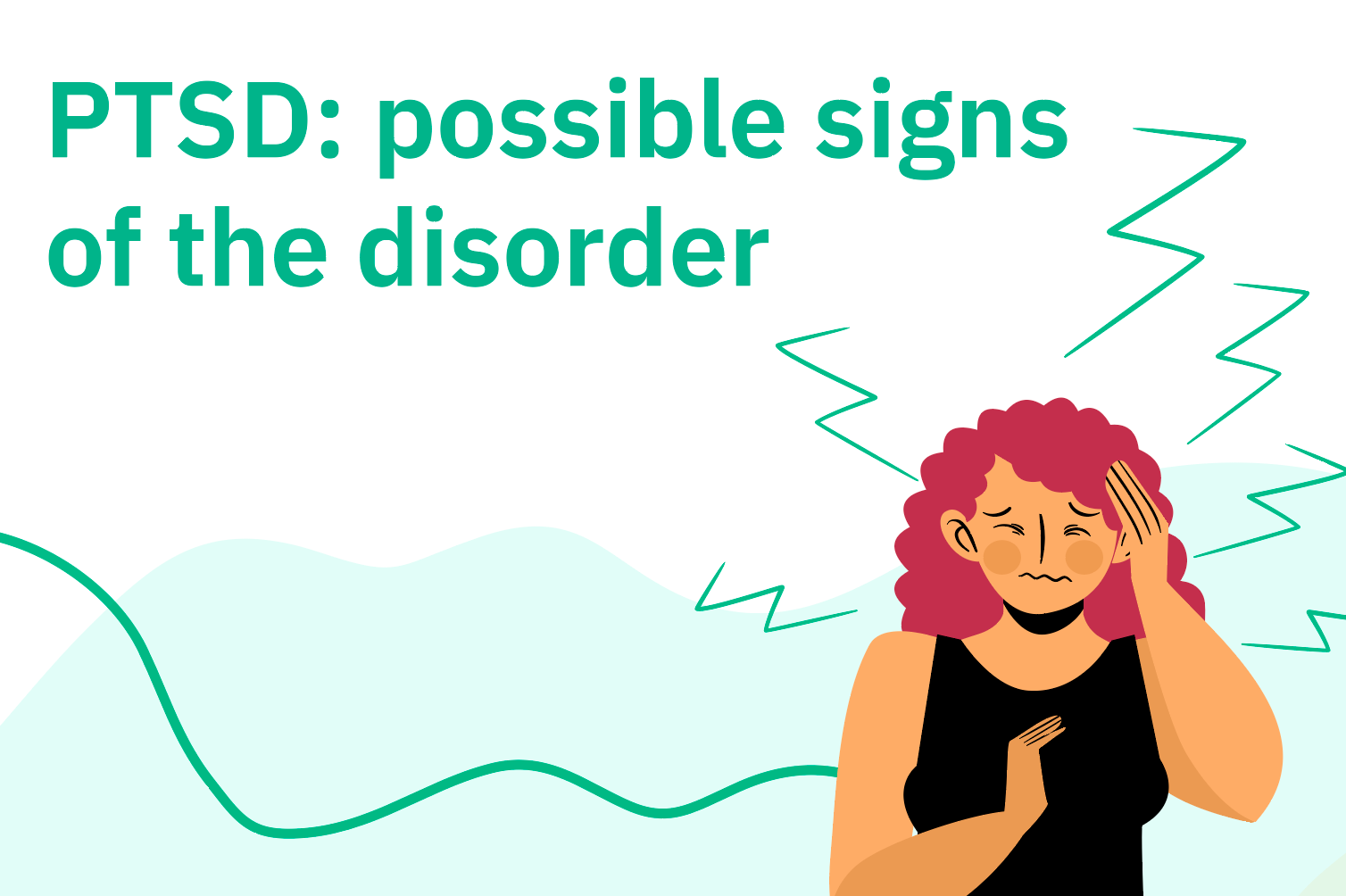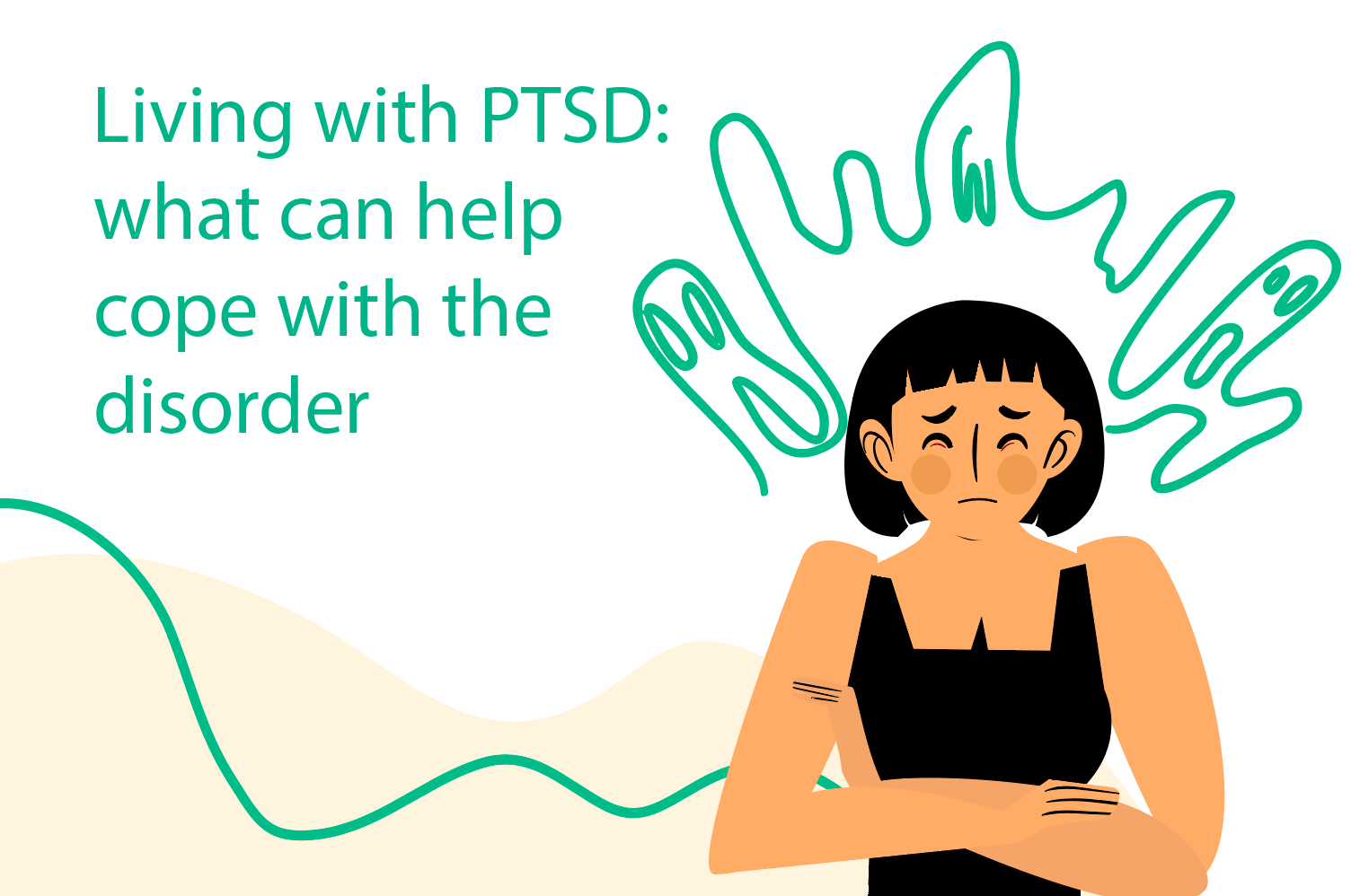
- Home
- PTSD: information for patients
- PTSD and eating disorder (ED)

PTSD and eating disorder (ED)
Eating disorder and PTSD - how can these two diseases be related? Eating behavior can change greatly due to stress or certain traumatic events. No doubt, war is one of them. Sometimes even those who are in relative safety start stress-eating. Further in the article, we will talk about causes of an eating disorder due to PTSD and methods of treatment.
ED and posttraumatic syndrome: what is the connection
What is an eating disorder (ED) in PTSD? Acute stress suppresses appetite. After the body receives the signal, adrenaline is released, the blood supply improves, blood pressure increases, and the heart rate increases. At the same time, the work of the digestive system slows down, because it interferes with quick reactions. There is no desire to eat at all.
Having experienced danger, when we later feel relatively safe, we need to regain our energy. So, cortisol, which increases appetite, is released. When stress passes, cortisol levels usually drop to normal levels.
But if the stress lasts long, as we have now, the body constantly maintains an elevated level of cortisol. Accordingly, the appetite can remain strong.
At the same time, people with eating disorders have a higher susceptibility to posttraumatic stress disorders. You can read detailed information about PTSD in a separate article.
At least 52% of people with a diagnosis of “eating disorder” have experienced trauma at one time.
Types of eating disorders
Usually, they are distinguishing four categories of eating disorders out there, but their combinations can also be found.
- Anorexia nervosa – when someone is afraid of gaining weight and eats too little.
- ARFID – stands for “avoidant/restrictive food intake disorder”. People with this disease have no interest in food, have sensory problems with taste, smell, or texture, or anxiety about not feeling well after eating.
- Bulimia nervosa is overeating due to psychological factors, after which the body is cleansed by vomiting. At that, it’s possible to observe that dependence of self-importance on weight or body shape is way too excessive.
- Binge-eating disorder (BED) is when someone eats a large amount of food in a short period of time, feeling that they cannot stop doing it because of heightened anxiety.
- OSFED - other specified feeding or eating disorders.
Eating disorder and PTSD: statistics
- Men with bulimia nervosa have a 66% higher risk of posttraumatic stress disorder than others.
- Approximately 37 to 40% of people with bulimia nervosa suffer from co-occurring PTSD.
- Approximately 26% of women with binge eating disorder meet criteria for PTSD.
- Approximately 23% of people with anorexia nervosa meet criteria for PTSD.
- 11.8% of women with other types of eating disorders also have symptoms of PTSD.
- Among the patients undergoing treatment for eating disorders in a hospital, up to 52% had symptoms of PTSD.
Can PTSD cause eating disorders
A spoiler: “Yes!”
- Trauma can create a negative image of one’s own body or self-perception. It also happens that people blame themselves and their appearance for what happened to them. If this is the case, then a person with PTSD can use food as a way of changing his body, a protective mechanism, or as a means to reduce self-hatred.
- Anorexia can be a way to express one’s anger and a way to distract oneself from painful emotions. This is like a desire to hide, hide oneself from others and disappear.
- In some cases, people have eating disorders as a way to cope with painful experiences. Both PTSD and eating disorders have high rates of dissociation — feelings of detachment from oneself. It is quite possible that people suffering from both disorders try to use their eating habits as a means to turn off traumatic memories and emotions or silence them. PTSD and eating disorders often occur simultaneously, but it can also be the other way around.
Some people can fight PTSD by using eating disorders as coping skills, trying to gain a sense of control, or trying to disconnect from the body or punish it.
And vice versa, a person with an eating disorder may be more vulnerable to injury. For example, some people with eating disorders are so serious that they require in-patient hospitalization and tube feeding to stabilize their condition. Such serious health complications can cause a more acute reaction to trauma.
Below you can find the posttraumatic stress disorder questionnaire.

The posttraumatic disorder questionnaire (PCL-5)
Peculiarities of therapy for eating disorders in PTSD
Finding the psychological causes of eating disorders is vital for effective treatment and support. Consequently, if posttraumatic stress disorder plays a role in eating disorder, it is important to deal with it as soon as possible to ensure recovery.
If you or someone you know feels that the trauma has a significant relationship with food, it is important to get help as soon as possible.
Among the methods used for treating PTSD, the following psychotherapy methods are recommended: trauma-oriented cognitive-behavioral therapy and the method of desensitization and processing with the help of eye movement.
Methods of treatment of ED in PTSD
There is no single standard of treatment for eating disorders in PTSD.
You must understand that the way to recovery can be long and difficult.
The assistance program may include the following treatment methods:
- Comprehensive examination, provision of information and approval of the assistance plan.
- Individual cognitive behavioral therapy.
- Psychological support or, if necessary, family psychotherapy.
- If necessary, drug therapy.
If you or your loved ones have noticed symptoms of PTSD and a change in your attitude towards food, it’s crucial that you consult a professional to find the best methods that will suit you specifically.
Sources:
- Klas Backholm, Rasmus Isomaa & Andreas Birgegård (2013) The prevalence and impact of trauma history in eating disorder patients, European Journal of Psychotraumatology, 4:1, 22482, DOI: 10.3402/ejpt.v4i0.22482
- Co-Occurring PTSD and Eating Disorders
- Frequently Asked Questions
- Most often, psychological trauma or genetic predisposition are considered among the causes of ED.


